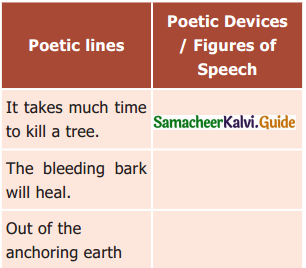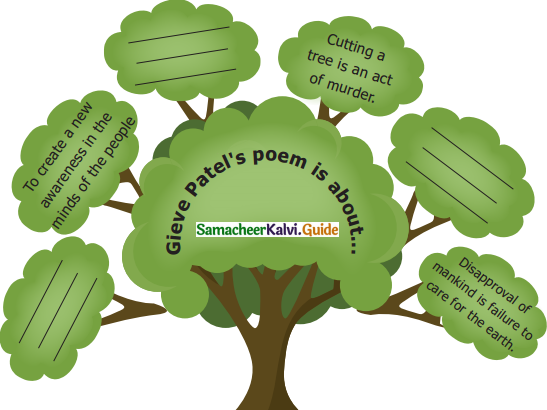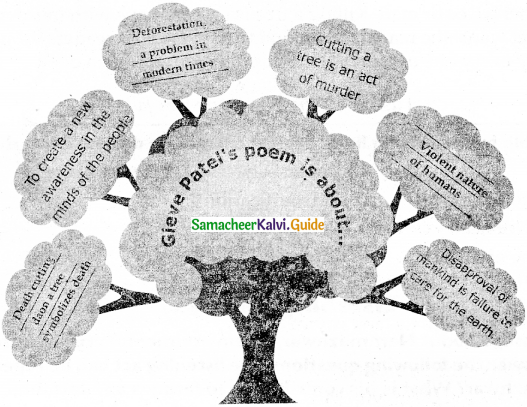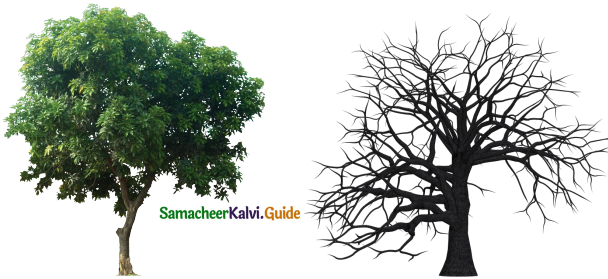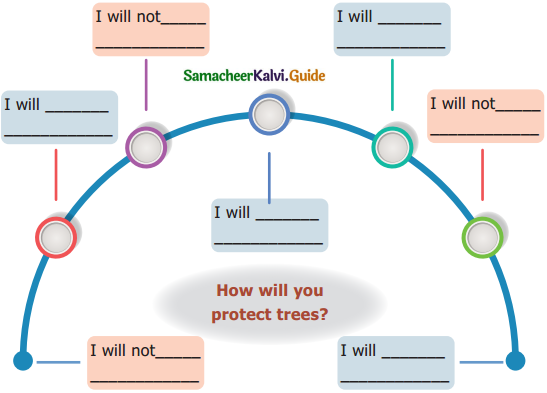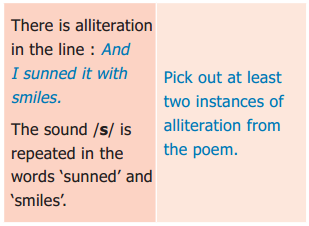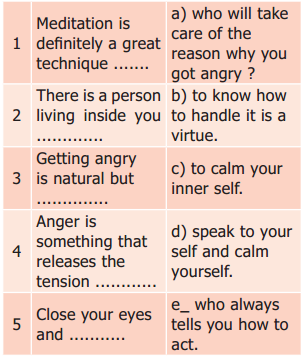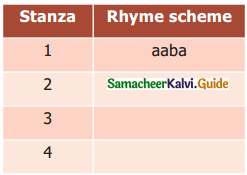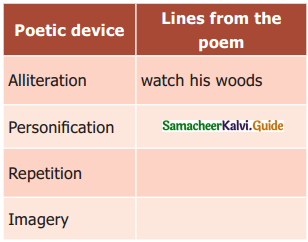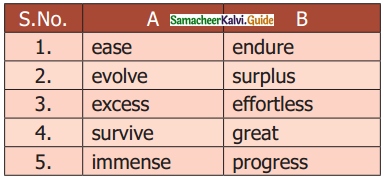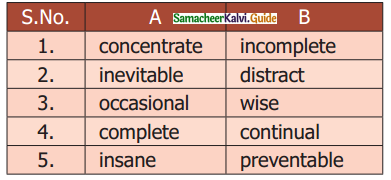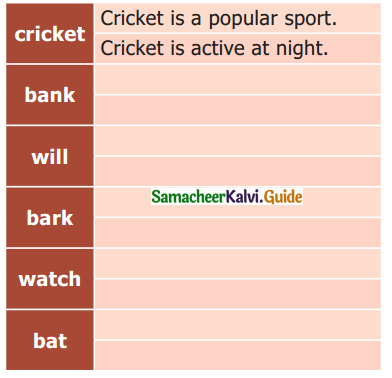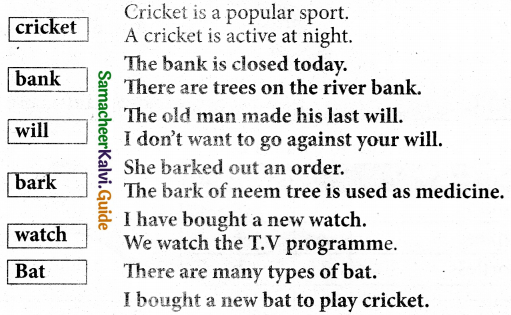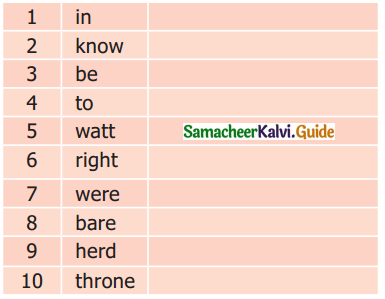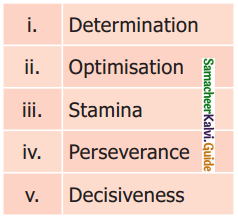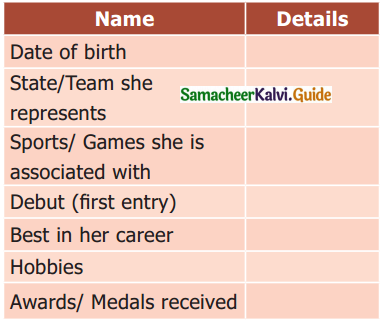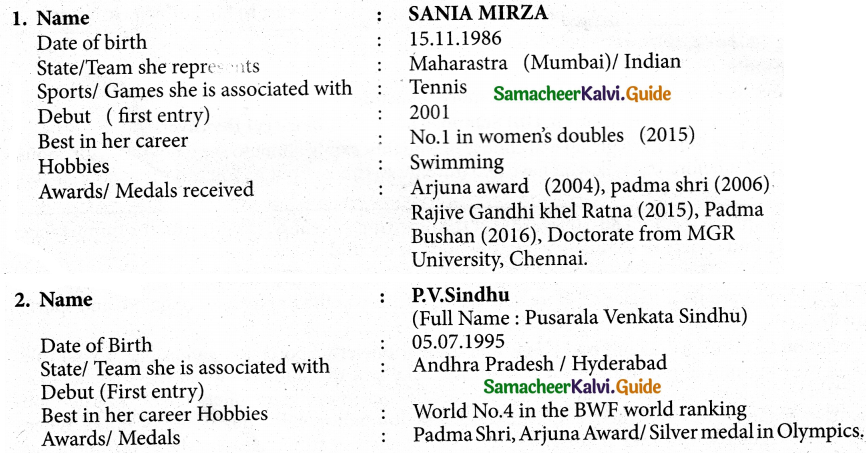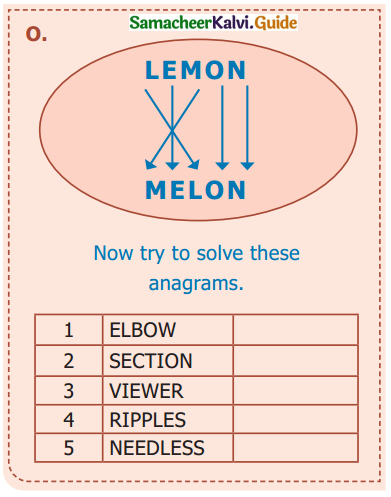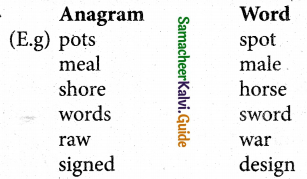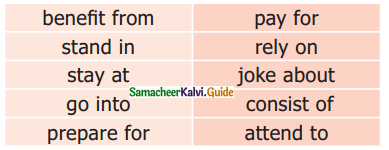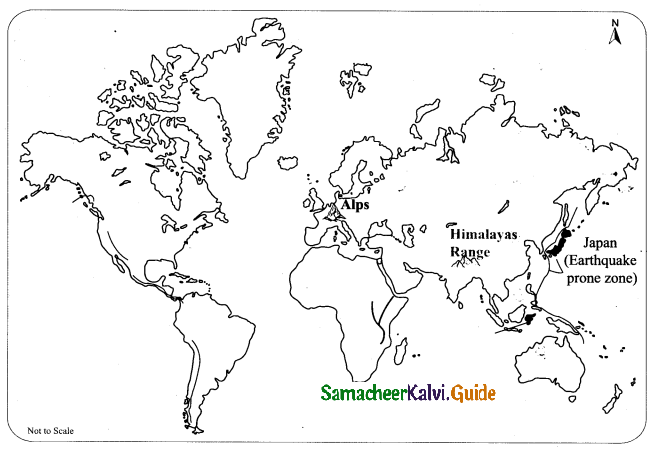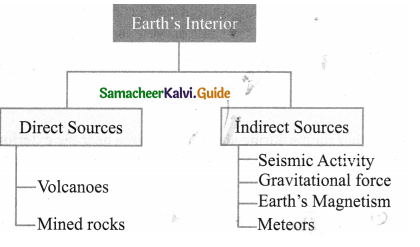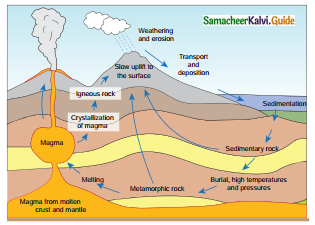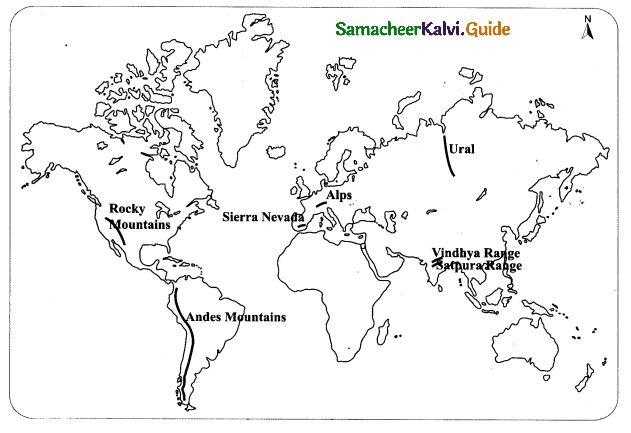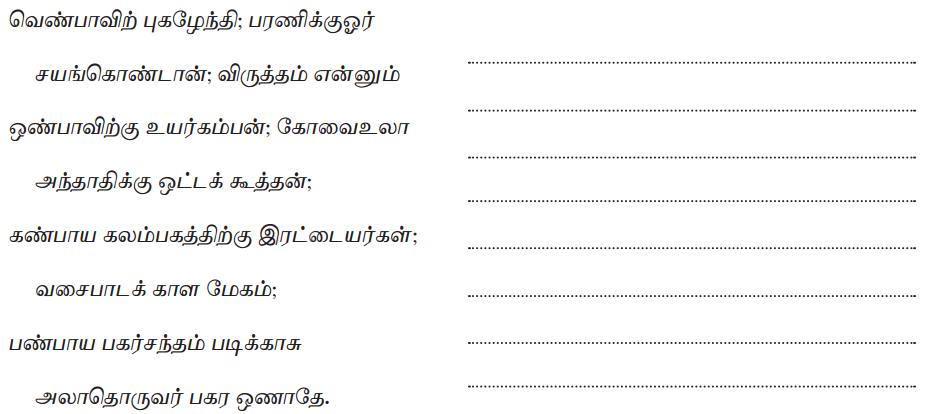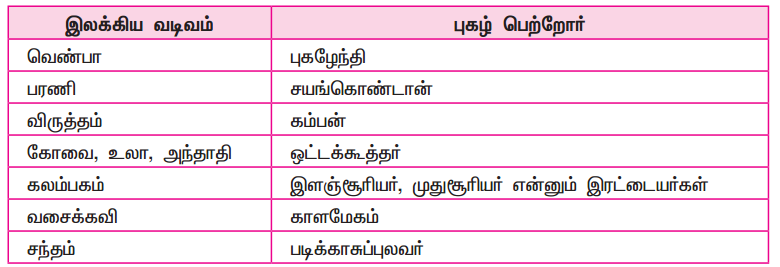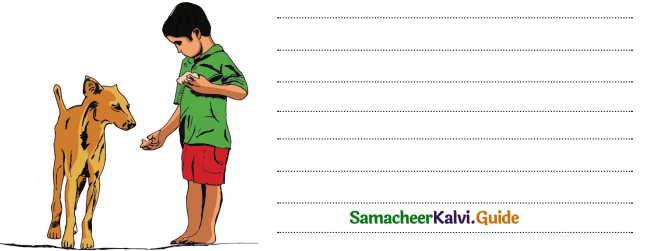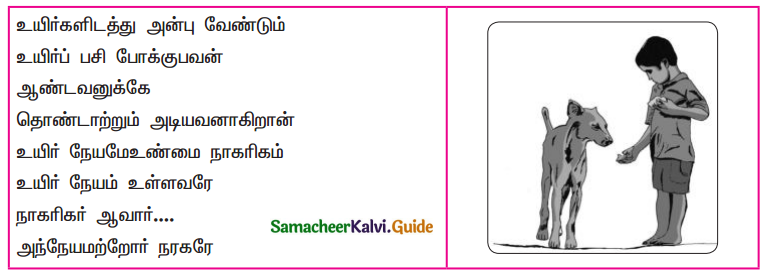Tamilnadu State Board New Syllabus Samacheer Kalvi 9th English Guide Pdf Poem 5 The River Questions and Answers, Summary, Notes.
Tamilnadu Samacheer Kalvi 9th English Solutions Poem 5 The River
9th English Guide The River Textbook Questions and Answers
B. Read the following lines and answer the questions given below:
1. O’er the yellow pebbles dancing
through the flowers and foliage glancing.
Question (a)
How does the river flow?
Answer:
The river flows over the yellow pebbles dancing through the flowers and leaves in a playful manner.
Question (b)
What is meant by ‘foliage’?
Answer:
Foliage means a cluster of leaves and branches of a tree or plant.
2. River; river! Swelling river!
On you rush through rough and smooth.
Question (a).
Why does the poet mention the river to be swelling?
Answer:
The poet mentions the river to be swelling because the river is like a reckless youth.
![]()
3. Over rocks, by rose – banks, sweeping
like impetuous youth.
Question (a).
Where does the rose grow?
Answer:
The rose grows by rose-banks
Question (b).
Which stage of men is compared here?
Answer:
The youth of men is compared here.
![]()
4. Broad and deep, and still as time Seeming still, yet still in motion.
Question (a).
What is broad and deep?
Answer:
The river is broad and deep.
Question (b).
Is time still?
Answer:
Yes, the time is still.
5. Tending onward to the ocean,
Just like a mortal prime.
Question (a).
Where is the river flowing to?
Answer:
The river is flowing to the ocean.
Question (b).
What does the poet mean by ‘mortal prime’?
Answer:
Mortal prime means a man in the best of his life.
![]()
Poetic Devices:
C. Road the following lines and answer the questions.
1. Bright you sparkle on your way;
O’er the yellow pebbles dancing.
Through the flowers and foliage glancing Like a child at play.
Pick out the rhyming words,
Answer:
Dancing and glancing; way and play are the rhyming words.
2. Mention the rhyme scheme of the poem.
Answer:
The rhyme scheme of the poem is abba.
3. Through the flowers and foliage glancing like a child at play.
Mention the figure of speech used in the above line.
Give various other examples from the poem.
The figure of speech used is “simile”
Other examples of the simile in this poem.
Answer:
- “Like impetuous youth”
- Just like mortal prime
- Still as time
- Like eternity”.
![]()
4. Seeming still, yet still in motion.
Question (a).
Pick out the words in alliteration from the above lines.
Answer:
The alliterated words are seeming, still, and still.
Question (b).
Identify other examples from the poem for alliteration.
Answer:
Other examples for alliteration from this poem:
- River, river, little river
- Through the flowers and foliage glancing
- River, river Swelling river!
- On you rush through rough and smooth
- Over rocks, by rose – banks, sweeping
- River, river! Brimming river!
- River, river! Headlong river!
- Down you dash into the sea.
- The sea that line hath never sounded
- The sea that sail hath never rounded.
5. Pick out the examples for epithet from the poem.
Answer:
- Swelling river
- Brimming river
- Mortal prime
- impetuous youth.
![]()
6. Pick out the examples for imagery from the poem.
Answer:
- Through the flowers and foliage glancing.
- On you rush through rough and smooth
- Louder, faster, brawling leaping
- Broad and deep and still
- Seeming still, yet still in motion
- By rose – banks.
Additional Questions And Answers
1. River, river, little river!
Bright you sparkle on your way.
Question (a).
What sort of river is it?
Answer:
It is a little river.
Question (b).
How does the river look?
Answer:
The river looks bright and it sparkles on its way.
2. O’er the yellow pebbles dancing Like a child at play
Question (a).
What are the pebbles?
Answer:
The pebbles are small smooth and round stones.
Question (b).
What is dancing over the yellow pebbles?
Answer:
The river is dancing ever the yellow pebbles.
![]()
Question (c)
How does the river dance?
Answer:
The river dances like a child at play.
3. River, river! Headlong river!
Down you dash into the sea,
Question (a).
What is meant by ‘Headlong’?
Answer:
Headlong means with the head first and the rest of the body following.
Question (b).
Where does the river dash into?
Answer:
The river dashes into the sea.
Question (c).
Who does ‘you’ refer to?
Answer:
You refer to the (little) river.
![]()
4. Sea that line hath never – sounded Sea that sail hath never rounded,
Like eternity.
Question (a).
What is meant by ‘line’ here?
Answer:
Here, the line means a long rope used for a particular purpose.
Question (b).
What is meant by ‘sail’ here?
Answer:
Sail means a trip in a boat or ship.
Question (c).
What is ‘eternity’?
Answer:
Eternity is life continuing without end after death.
Question (d).
Pick out the rhyming words in these lines.
Answer:
The rhyming words are sounded and rounded,
![]()
D. Answer the following in a paragraph of about 120 – 150 words.
Question 1.
How does the poet bring about the comparison of life with the river? Explain it with reference to the poem.
Answer:
‘The River’ is a poem describing the beauty of a river, in all its glory. Caroline Ann Bowles says that the river is a dynamic and vital symbol of nature. The poem has philosophical undertones also. The flow of the river shows the journey of life to eternity. The different stages of life are brought in through the imagery used in the poem. Initially, the river is compared to the yellow pebbles dancing.
This indicates childhood. The river then rushes through rough and smooth paths, brawling and leaping referring to the stage of reckless youth. When the river ebbs and flows, appearing to be broad and deep, inclining towards the ocean, one can see the prime phase of a human being. The flow of the river shows the journey of life to eternity.
As human life passes through childhood, youth, old age, and eternity, likewise the river also undergoes changes in its course of action. The gentle, sparkling dancing river, faster, brawling, leaping river, its stillness, and the merging with the sea towards the end of the poem, indicate the different stages of the river like the stages of human life.
(OR)
In the poem ‘The River’ the poet compares the river with the different stages in a man’s life. The river is bright sparkling on its way. It dances over the yellow pebbles. It glances through the flowers and foliage. It is like a child at play. The river is selling and rushing through rough and smooth surfaces. It is brawling and leaps. It goes through the rough rocks and rose-banks. It is compared to a reckless youth.
![]()
The river is full, wide, and deep. it is still like time. It appears motionless but keeps moving to the ocean. It is like life in its prime. l’he river runs quickly into the sea. The line has never measured the depth of the sea. No ship has ever rounded the sea company. the river is compared to eternity.
‘The river of knowledge has no depth’.
Question 2.
Describe how the poem clearly describes the features, functions, and destructive power of the river.
Answer:
Title: The River
Poet: Caroline Ann Bowles (1786-1854)
Theme: Rivers can favour but courses fear too.
A river is a natural watercourse usually freshwater flowing towards an ocean, sea on another river. Small rivers can be referred to as streams, brooks, and rills. Rivers are part of the hydrological cycle. Water generally collects in a river from precipitation through a . drainage basin from surface runoff. The other sources are groundwater recharge, springs, and glaciers. Rivers can flow down from mountains, through valleys, or along planes.
Rivers source to the river mouth, do not necessarily take the shortest path. Rivers are sources of water for consumption, agriculture, and industry. A river provides transportation routes, energy, and a means of disposal of wastes. The flow of water in rivers is never constant. High amounts of water flowing in rivers after leads to flooding. Flooding is one of the more common and costly types
![]()
after leads to flooding. Flooding is one of the more common and costly types of natural disasters. A flood results when a river runs out of its confines and submerges the surrounding areas. However, floods have enormous destructive power. Floods occur naturally. Floods can devastate an environment. It is not always possible to prevent floods, but it is after possible to minimize flood, damage.
“A river doesn’t just carry water, it carries life.”
(OR)
A river is a natural flowing watercourse towards an ocean. Rivers are part of the hydrological cycle. Water generally collects in a river from precipitation through a drainage basin from the surface runoff. Groundwater recharge, springs and glaciers are the other sources. Rivers can flow from mountains, through valleys or along planes. Rivers are sources of water consumption, agriculture and industry. The flow of water in rivers is never constant.
High amount of water flowing in rivers after leads to flooding. Flooding is one of the more common and costly types of disasters. A flood results when a river runs out of its confines and submerges the surrounding areas. However, floods have enormous destructive power. Flood occur naturally. They can environment. It is not always possible to prevent floods but it is after possible to minimize flood damage.
“We forget that the water cycle and the life cycle are one”
E. Based on your understanding of the poem, complete the summary of the poem by choosing the words/phrases given below :
In the poem ‘The River’, the poet compares the flow of the river with different (1)……………….. The first stanza explains how the sparkling river goes dancing over (2)……………….. and glancing through the flowers and leaves. These acts of the river is compared to a curious and innocent (3)……………….. at play. The second stanza compares the river to a (4)……………….. who goes through rough and smooth patches of life. Like a youth, here the river becomes louder, faster, and (5)……………….. everything all along the way. In the third stanza, the river becomes like a hard-working man who is at the (6)……………….. of life. Here the deep and broad river seems (7)……………….. but it keeps moving towards the sea like a matured man who silently marches towards the goal. In the last stanza, the long (8)……………….. of the river reaches the endless sea like a human life attains eternity
Answer:
- Stages of human life.
- The yellow pebbles
- Child.
- Reckless youth
- Sweeping
- Prime phase
- Motionless
- Journey
![]()
